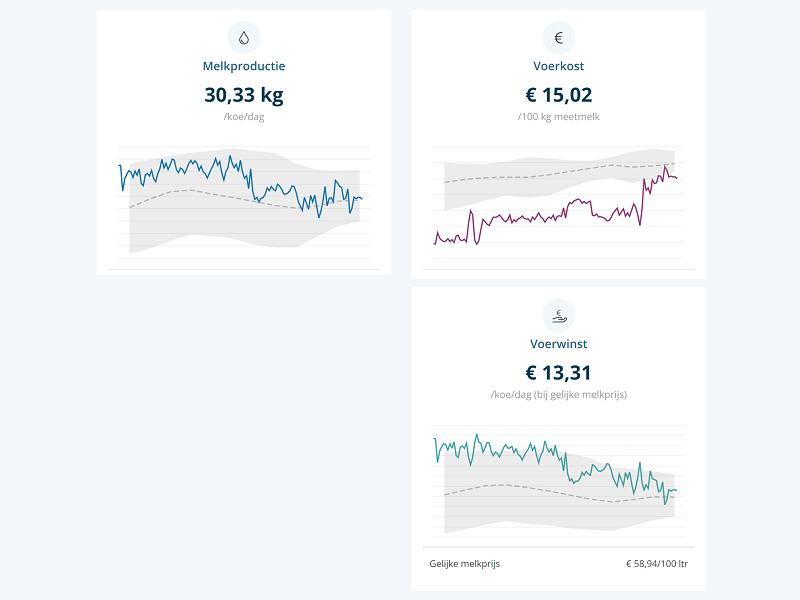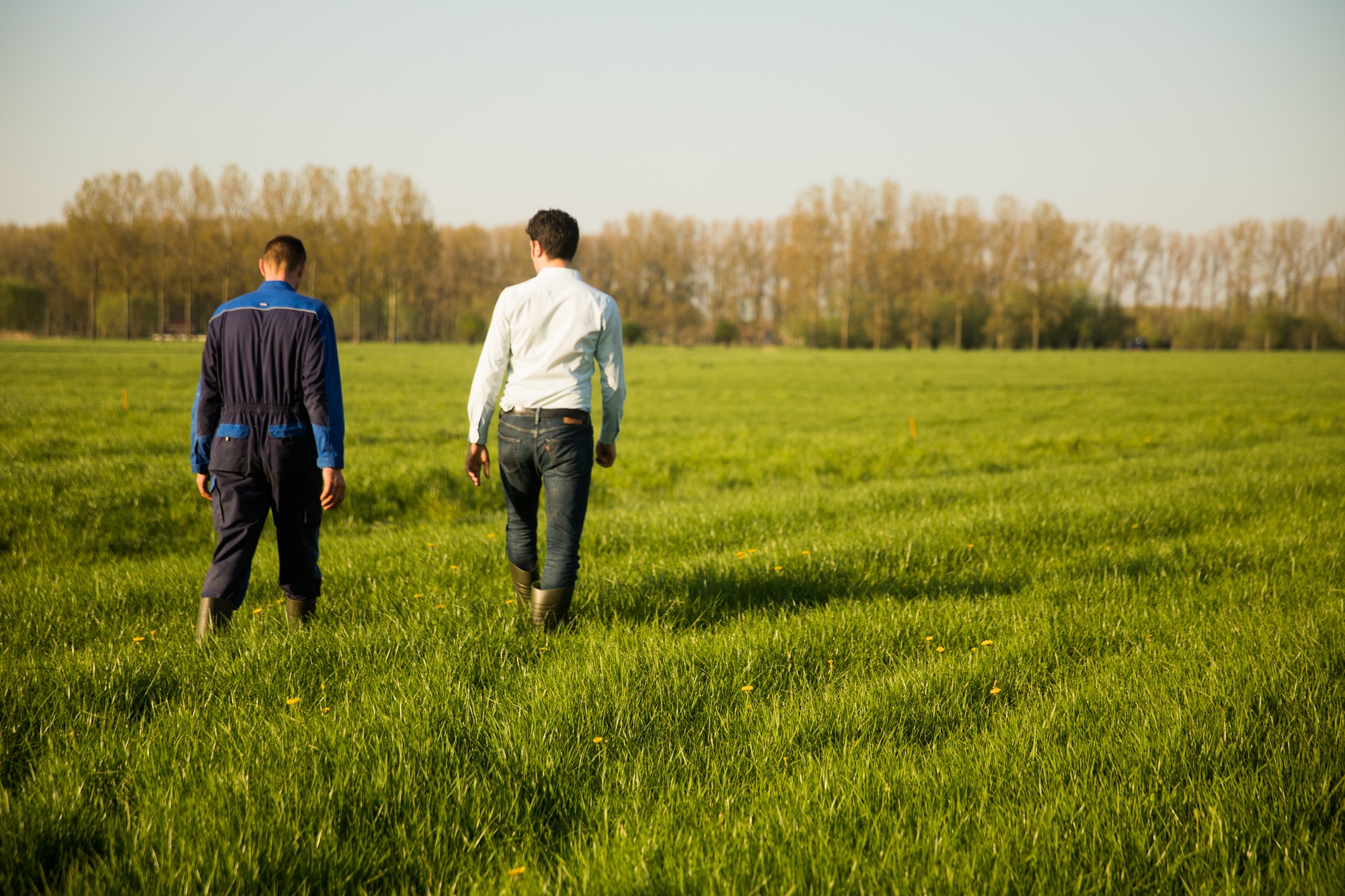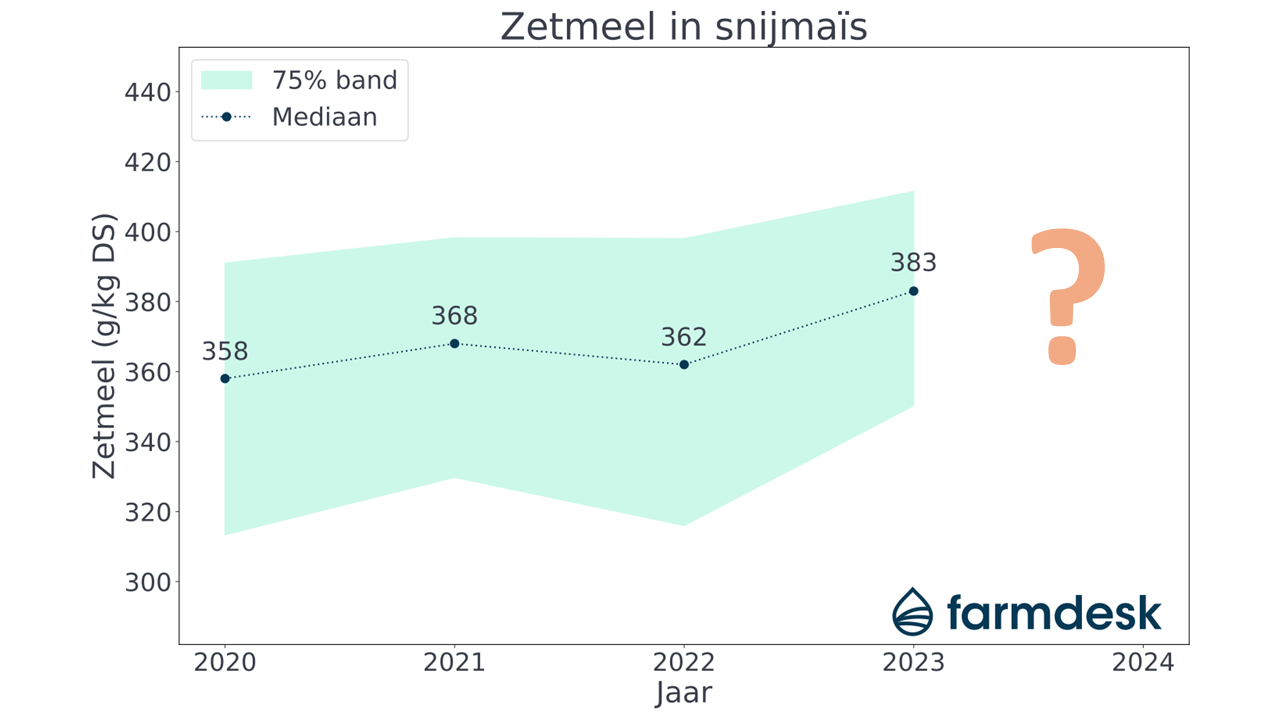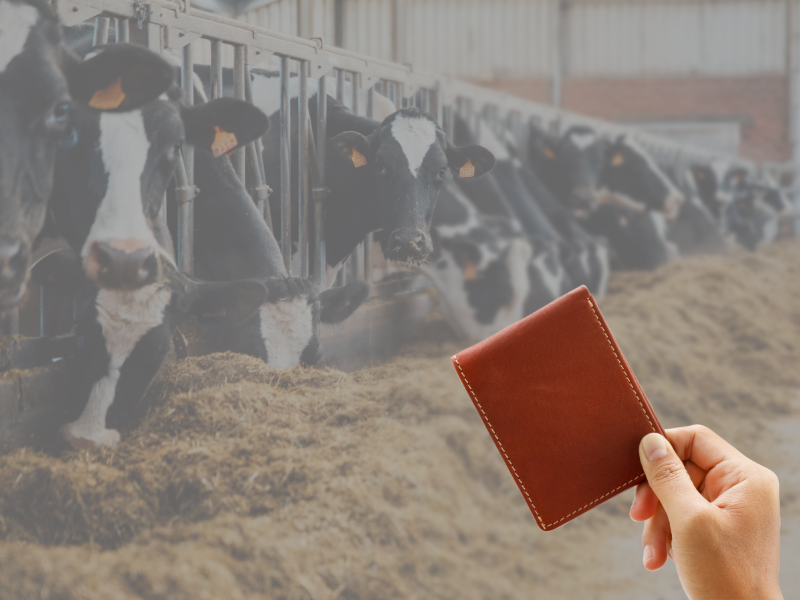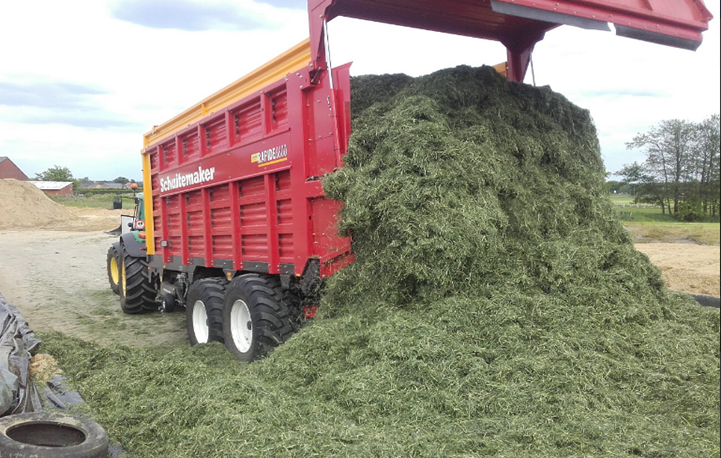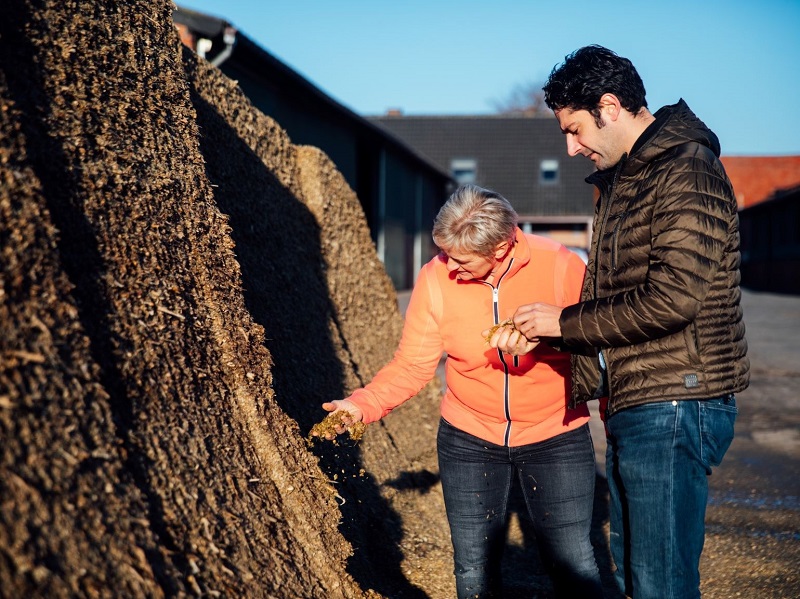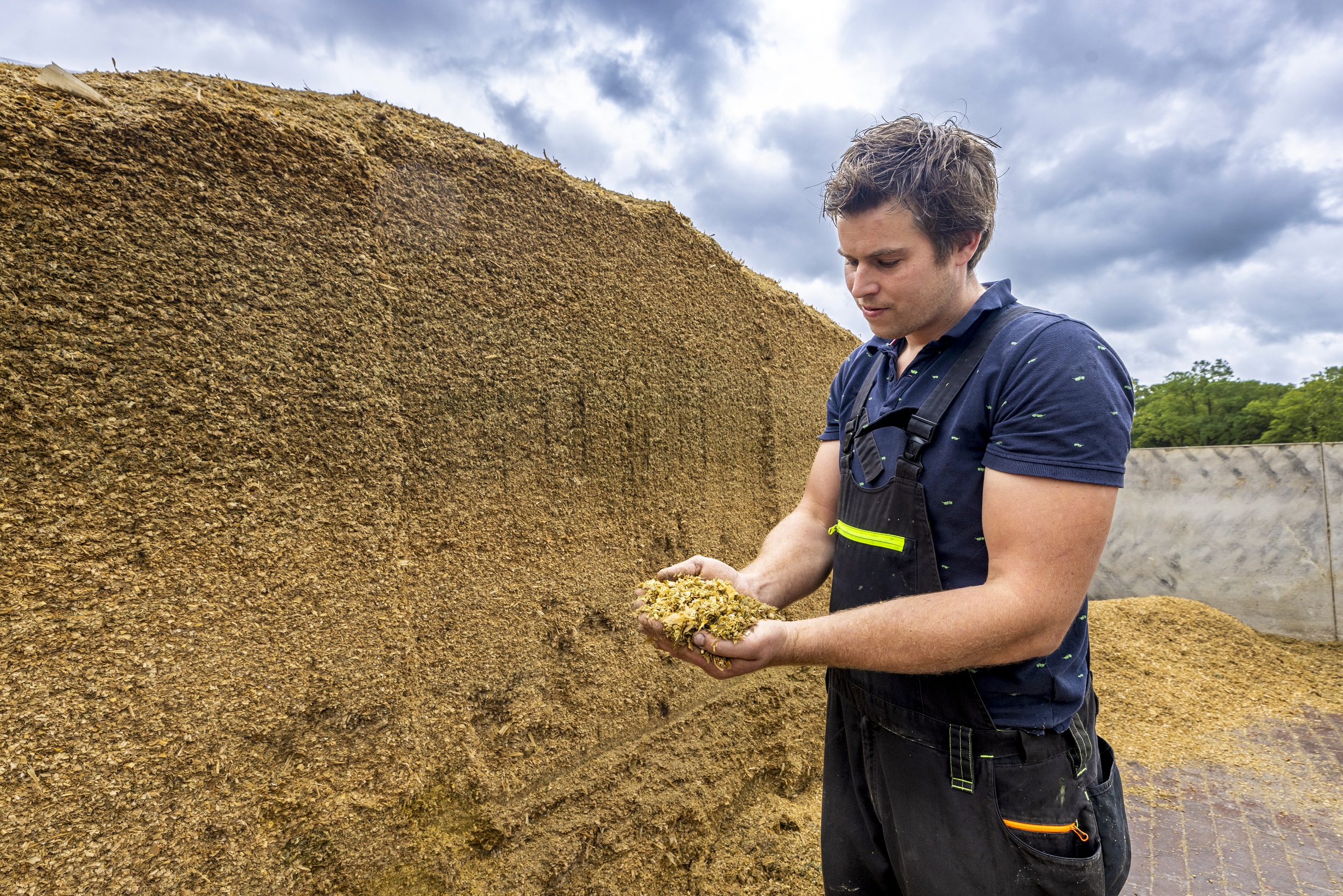Herewith a write-up on feed profits and other key figures, possibly you may think that will be a boring write-up, because Key figures are often not the biggest hobby of ours.
"Still, there is money to be made on a large number of dairy farms by retreating to our office for a short period of the week to balance our work and the results of the dairy cows."
Farmdesk Staff Member
It also makes sense to possibly determine with your partner, your employees, advisors, or of course alone what your business goals are for the coming period and plan your business operations accordingly.
Feed Profit
Current milk prices are the highest ever. This is a huge incentive for us as dairy farmers and gives room to potentially increase feed profit. Feed profit is similar to the feed balance and is calculated by subtracting feed costs from milk yields. The beauty of this prefix is that it can be controlled on two sides:
Increase milk yield
First of all, you can increase milk yield by increasing kg of milk and the contents of milk fat and milk protein. You can increase the amount of milk by getting the quality of forage as good as possible and preventing losses of forage due to heating or improper use. Other options include milking 3 times daily or choosing a different feeding strategy.
Also, by striving for good animal health and balancing the milk rations correctly, you can influence the percentage of milk fat and the percentage of milk protein in addition to the amount of milk. Both the kilograms of milk and the percentages of fat and protein in the milk affect the calculation of the measured milk production, with the key figure production measured milk you can compare different farms.
Reduce feed costs
Steering forage profits can also be done by reducing forage costs. You can do this by smartly choosing what crude feed you grow on your farm and seeing if you can reduce certain processing costs of the forage. Because you have limited ability to fill the cow's rumen, the concentration of forage value is of great importance, to keep the animal healthy, providing enough structure is inevitable to keep the cow ruminating.
There are several options for reducing supplements to roughage. First, it is important that you choose the right supplements, be critical in pressed and mixed products as to the nature of the raw materials and consult with your feed consultant as to the advantages and disadvantages of the raw materials contained in your purchased products. Also, products that have gone through multiple treatments may be more expensive to produce due to their treatments.
Important clues to the proper use of supplements are the distribution of the BSK among the different production groups on the quick view of your milk control; in a persistent dairy herd, it rises gently during lactation. However, if there are large fluctuations in the BSK, there may be room for improvement. In addition, the distribution of urea and protein over lactation days is an important indication of the correct deployment of protein components.
In addition, the price of the supplementary feed is an important consideration. When determining the price, look not only at the nutritional values (such as VEM starch and protein), but also at the values of the raw materials present in the compound feed. Don't take this lightly, but also realize, for example, that in many cases the consultancy costs of your feed specialist are included. For this reason, it is interesting to track the market prices of raw materials. By recognizing and tracking market prices, you gain commodity insight.
Also, the amount of complementary feeds affects the cost of your feed.
"Does every kilogram of concentrate you put in yield enough to pay for itself?"
Farmdesk Staff Member
Managing your own business
To properly manage forage profits, it is important to have insight into both feed costs and milk yields. Feed costs are not always easy to calculate because, for example, cereal feed costs depend on several factors such as fertilizer costs, harvest costs and the land lease or interest costs. To get a correct picture from a business point of view, it is advisable to calculate with an estimated rental value in the cost price of roughage (you also create in this way the possibility to compare your farm with another farm).
In addition to feeding feeds grown on the farm, it is important to have a good understanding of the costs of purchased feeds, these include costs of purchased concentrate feeds, single raw materials and wet by-products and additives. (Additives include such supplements as mineral mixtures, chalk, buffering products, etc.).
When you want to achieve business goals you may instinctively work against yourself, for example, it may be a conscious choice to produce more milk per cow with higher feed costs, but also a higher feed profit. , but also choice in lower feed costs with lower milk production. Good to know where you stand by having your cost price transparent after each tank milk delivery.
Metrics like feed efficiency and protein efficiency are a quick way to see what changes in your management are doing on the farm. If you calculate these numbers at regular intervals and plot them on a graph, you can see fairly quickly the consequences of a change in ration. In combination with the feed costs per kg of milk and your feed consumption and having insight into your feed ration, you get easy insight and are a full sparring partner for your feed consultant.
Farmdesk
Should you need help in understanding the various key figures on your farm you can use Farmdesk. Farmdesk is an online management program that maps out your crop planning and ration . Also, after each milk tank delivery, the program determines the actual key figures and puts them clearly away in graphs. You can request a no-obligation demo of the program.
